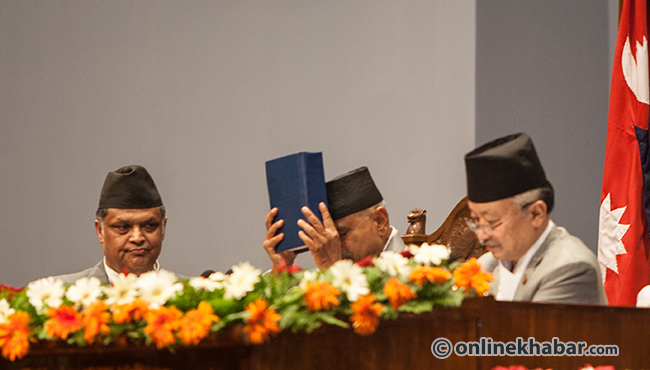
Nepal marks National Law Day on Baishakh 26 every year as per the Nepali calendar to commemorate the issuance of the law to govern Nepal’s judicial system in 2009 BS (May 8, 1952), considering it as a milestone in the development of law in Nepal. Different law-related organisations all over the country are celebrating the day in various ways.
Law is something that binds people under the rules and regulations. A country without the law is unimaginable. In modern society, the law has been a part of human life as they say ignorance of the law is no excuse.
So, on the occasion of National Law Day, let’s review the development of law in Nepal so far.
Talking about Nepal’s legal system, it has a long history and in all these years, it has witnessed changes galore. Here are some of the major changes that have shaped the development of law in Nepal’s history.
1. The inception of the legal system in Nepal
The history of the development of law in Nepal dates back to over 2,000 years ago. The formal discussion on the legal system began during the Kirant dynasty (early 307 BC), the first ruling dynasty of Nepal.
During that time, there were four tribunals: Kuther, Sulli, Ligwal and Mapchok. Back then, the primary source of law was Mundum, the religious scripture of Kirant. Mainly, in Mundum, there were rules regarding birth, death, marriage and property.
Likewise, theft, robbery and murder were considered crimes. During this period inter-caste marriage was unacceptable. The king used to be the ultimate body to provide justice to the public. The king used to appoint specific people to formulate laws.
2. Systemisation of judicial administration

Despite spending most of the time in unification, King Prithivi Narayan Shah also made a notable contribution to the development of law in Nepal. The judicial administration of the country became systematic during his reign.
A kachahari (court) was set up in each district, which used to be operated by officials with the titles of Dittha, Bichari and Pandit. They worked together with the district administrator, called amali, to adjudicate cases. With that, Shah also abolished almost all previous courts and established many courts. It is found that the law back then was based on Yajnavalkya Smriti, a Hindu religious text.
3. Making of Muluki Ain
The Rana regime is also a significant phase in the development of Nepal’s legal system.
In 1853, the first Muluki Ain, also known as the first written law of the country, was formulated under the reign of Surendra Bikram Shah. It codified all laws of Nepal – civil and criminal, including religious and customary.
The Muluki Ain, perhaps one of the greatest milestones in the development of law in Nepal, exempted Brahmins and women from capital punishment; instead, they were subject to “damal”, life imprisonment with confiscation of property and other legal consequences, upon conviction of capital crimes.
4. Independent judiciary

Late kings, Tribhuvan Bir Bikram Shah Dev and Mahendra Bir Bikram Shah Dev, made remarkable contributions to the development of law in Nepal. King Tribhuvan introduced laws that made the judiciary independent and established the Pradhan Nayalaya (the Supreme Court) as the highest and final court of the land. He later revised this by commanding that the highest court should revise its own decisions according to law, as and when necessary, under established procedures.
Extensive legal and judicial reforms were, however, carried out during the reign of King Mahendra, which significantly impacted Nepal’s legal system.
He was the first Nepali monarch to introduce a constitution as the fundamental law of the nation. Under his reign, the previous Muluki Ain was replaced with a new one that emphasised the principle of equality before the law and abolished the consideration of caste and religion in practising law.
5. Constitution by numbers

So far Nepal has seven constitutions, which are considered the laws of all other laws. They are the Government of Nepal Act issued in 1948, the Interim Government of Nepal Act issued in 1951, the Constitution of the Kingdom of Nepal issued in 1959, the Constitution of Nepal issued in 1962, the Constitution of the Kingdom of Nepal issued in 1990, the Interim Constitution of Nepal issued in 2007 and the Constitution of Nepal issued in 2015.
On September 20, 2015, an elected Constituent Assembly promulgated the latest constitution of Nepal, which remains in effect to this day.

















